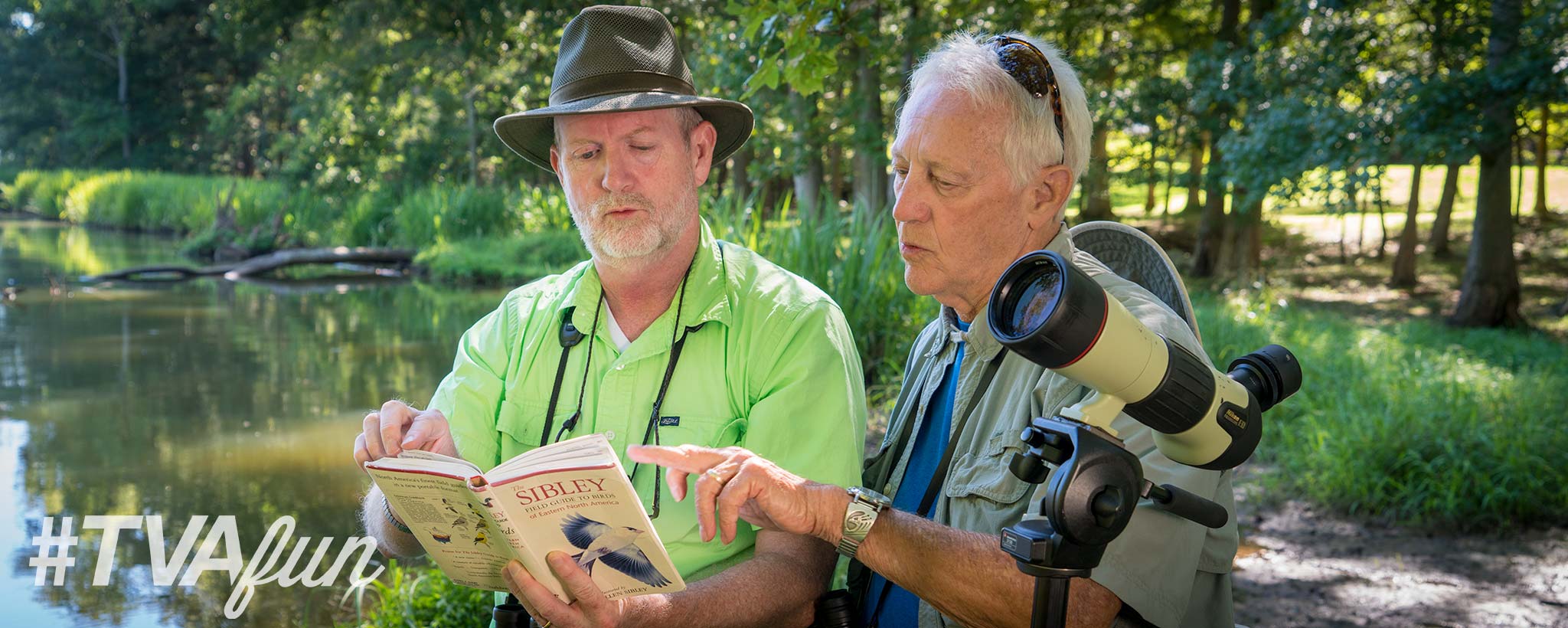
Birdwatching
Any nature lover can tell you there's no more peaceful or beautiful pursuit than birdwatching—and the Tennessee Valley boasts beautiful avian views.
TVA has taken steps to make its lands attractive to avian life as part of its environmental stewardship. As a result, many of TVA’s developed and undeveloped lands have become must-see destinations for birdwatching.
For many years, TVA has worked in conjunction with the U.S. Fish and Wildlife Service and state wildlife agencies to promote healthy conditions for birds as part of its mission to care for public lands. Efforts have included installing bird boxes; planting native grasses for songbirds, game birds and other wildlife; and building nesting platforms for osprey.
As a result of TVA’s efforts, its lands have become a birdwatcher’s paradise, with birds living in and migrating through TVA lands year-round. Here are some of the best sites for birdwatchers, along with the species you’re likely to see.
If you have any questions or would like more information, please contact the Public Land Information Center.
Rankin Bottoms, Douglas Reservoir
Double-crested cormorants, herons, Canada geese, wood ducks, ospreys, prothonotary warblers, shorebirds, terns and bald eagles. In late summer and early fall, hundreds of migrating shorebirds, terns, herons and egrets are common.
Songbird Trail, Norris Reservoir
Great blue herons, Canada geese, wood ducks and belted kingfishers along the river and a variety of woodpeckers, vireos, thrushes, warblers, tanagers, orioles and sparrows in the riverbank forest and adjacent fields.
Chota Waterfowl Refuge, Tellico Reservoir
Grebes, loons, herons, bald eagles and a large variety of songbirds, including both resident species and neotropical migrants. This area also supports an average of 3,000 ducks during the winter months.
Hiwassee Refuge, Chickamauga Reservoir
Shorebirds, terns, double-crested cormorants, herons, ospreys, bald eagles and a large variety of songbirds. In winter sandhill cranes number in the thousands.
Guntersville State Park, Guntersville Reservoir
A wide variety of warblers, vireos and thrushes; scarlet tanagers and brown-headed nuthatches. The park is best known for large numbers of wintering bald eagles.
Muscle Shoals Reservation, Wilson Reservoir
All 37 species of eastern warblers (including the uncommon Swainson’s warbler in the Southport area), thrushes, bluebirds, eastern kingbirds, American kestrels, barred owls and woodpeckers along several miles of trails. Great blue and black-crowned night herons, terns, Baltimore orioles, hummingbirds, and occasional willets and spotted sandpipers along the river below Wilson Dam.
Duck River Unit, Tennessee National Wildlife Refuge, Kentucky Reservoir
Nesting herons, bald eagles, ospreys, tree swallows and prothonotary warblers. The Duck River, Busseltown, and Big Sandy units of the refuge also are home to large numbers of wintering ducks and geese.
